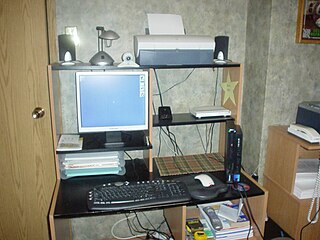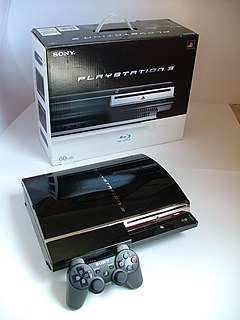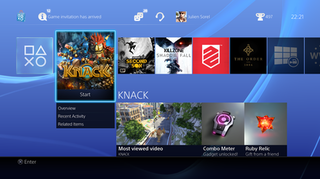
The PlayStation 3 (PS3) is a home video game console developed by Sony Computer Entertainment. It is the successor to PlayStation 2, and is part of the PlayStation brand of consoles. It was first released on November 11, 2006, in Japan, November 17, 2006, in North America, and March 23, 2007, in Europe and Australia. The PlayStation 3 competed primarily against Microsoft's Xbox 360 and Nintendo's Wii as part of the seventh generation of video game consoles.
A regional lockout is a class of digital rights management preventing the use of a certain product or service, such as multimedia or a hardware device, outside a certain region or territory. A regional lockout may be enforced through physical means, through technological means such as detecting the user's IP address or using an identifying code, or through unintentional means introduced by devices only supporting certain regional technologies.
A softmod is a method of using software to modify the intended behavior of hardware, such as video cards, sound cards, or game consoles in a way that can overcome restrictions of the firmware, or install custom firmware.
Homebrew, when applied to video games, refers to games produced by hobbyists for proprietary video game consoles which are not intended to be user-programmable. Official documentation is often only available to licensed developers, and these systems may use storage formats that make distribution difficult. Many consoles have hardware restrictions to prevent unauthorized development. A non-professional developer for a system intended to be user-programmable, like the Commodore 64, is simply called a hobbyist.

Linux for PlayStation 2 is a kit released by Sony Computer Entertainment in 2002 that allows the PlayStation 2 console to be used as a personal computer. It included a Linux-based operating system, a USB keyboard and mouse, a VGA adapter, a PS2 network adapter, and a 40 GB hard disk drive (HDD). An 8 MB memory card is required; it must be formatted during installation, erasing all data previously saved on it, though afterwards the remaining space may be used for savegames. It is strongly recommended that a user of Linux for PlayStation 2 have some basic knowledge of Linux before installing and using it, due to the command-line interface for installation.
HD Loader is a program for the PlayStation 2 video game console which allows users to play games installed on the optional hard drive peripheral via PlayStation 2 Network Adaptor. The games can be copied to the hard drive from within the program, or by using a computer with image dumping software that outputs to a specific custom format.

PlayStation Portable homebrew refers to the process of using exploits and hacks to execute unsigned code on the PlayStation Portable (PSP).
PlayStation Broadband Navigator is software for Japanese PlayStation 2 consoles that formats a hard disk drive for use with those consoles and provides an interface for manipulating data on that hard disk drive. It only works with official PlayStation 2 HDD units.
Import gamers are a subset of the video game player community that take part in the practice of playing video games from another region, usually from Japan where the majority of games for certain systems originate.
OtherOS was a feature available in early versions of the PlayStation 3 video game console that allowed user installed software, such as Linux or FreeBSD, to run on the system. The feature is not available in newer models and was removed from older models through system firmware update 3.21, released April 1, 2010.

The PlayStation 3 system software is the updatable firmware and operating system of the PlayStation 3. The base operating system used by Sony for the PlayStation 3 is a fork of both FreeBSD and NetBSD called CellOS. It uses XrossMediaBar as its graphical shell.
The PlayStation Portable system software is the official firmware for the PlayStation Portable. It uses the XrossMediaBar (XMB) as its user interface, similar to the PlayStation 3 console. Updates add new functionality as well as security patches to prevent unsigned code from being executed on the system. Updates can be obtained in four ways:

The PlayStation 3 technical specifications describe the various components of the PlayStation 3 (PS3) video game console.

The Wii system software is a discontinued set of updatable firmware versions and a software frontend on the Wii home video game console. Updates, which could be downloaded over the Internet or read from a game disc, allowed Nintendo to add additional features and software, as well as to patch security vulnerabilities used by users to load homebrew software. When a new update became available, Nintendo sent a message to the Wii Message Board of Internet-connected systems notifying them of the available update.

The PlayStation 2 (PS2) is a home video game console developed and marketed by Sony Computer Entertainment. It was first released in Japan on March 4, 2000, in North America on October 26, 2000, in Europe on November 24, 2000, and in Australia on November 30, 2000. It is the successor to the original PlayStation, as well as the second installment in the PlayStation console line-up. A sixth-generation console, it competed with Sega's Dreamcast, Nintendo's GameCube, and Microsoft's original Xbox.

PlayStation 3 Jailbreak was the first USB chipset that allows unauthorized execution of code, similar to homebrew, on the PlayStation 3. It bypasses a system security check using a memory exploit which occurs with USB devices that allows the execution of unsigned code. One of the most popular pieces of homebrew software used with the device is Backup Manager, which allows users to copy game titles from the optical media to the hard drive of the PlayStation 3. Backup Manager can also be used to run homebrew applications that are created to run in the console's native mode.

The PlayStation 4 system software is the updatable firmware and operating system of the PlayStation 4. The operating system is Orbis OS, based on FreeBSD 9.

There were many revisions of the PlayStation 2 (PS2) in its history from 2000 to 2013, some only of internal construction and others involving substantial external changes. These are colloquially known among PS2 hardware hackers as V0, V1, V2, ..., V18. Each region receives a different model number; for example, the V18 was released in North America as SCPH-90001, in Australia as SCPH-90002, and in Hong Kong as SCPH-90006. The final digit is a region code with no bearing on the hardware; many games and DVDs are restricted to certain regions, and the system software displays in different languages.
Custom firmware, also known as aftermarket firmware, is an unofficial new or modified version of firmware created by third parties on devices such as video game consoles and various embedded device types to provide new features or to unlock hidden functionality. In the video game console community, the term is often written as custom firmware or simply CFW, referring to an altered version of the original system software inside a video game console such as the PlayStation Portable, PlayStation 3, PlayStation Vita and Nintendo 3DS. Installing custom firmware typically requires bootloader unlocking.

The PlayStation 5 (PS5) is a home video game console developed by Sony Interactive Entertainment. Announced in 2019 as the successor to the PlayStation 4, the PS5 was released on November 12, 2020, in Australia, Japan, New Zealand, North America, and South Korea, with worldwide release following a week later. The PS5 is part of the ninth generation of video game consoles, along with Microsoft's Xbox Series X and Series S consoles, which were released in the same month.











